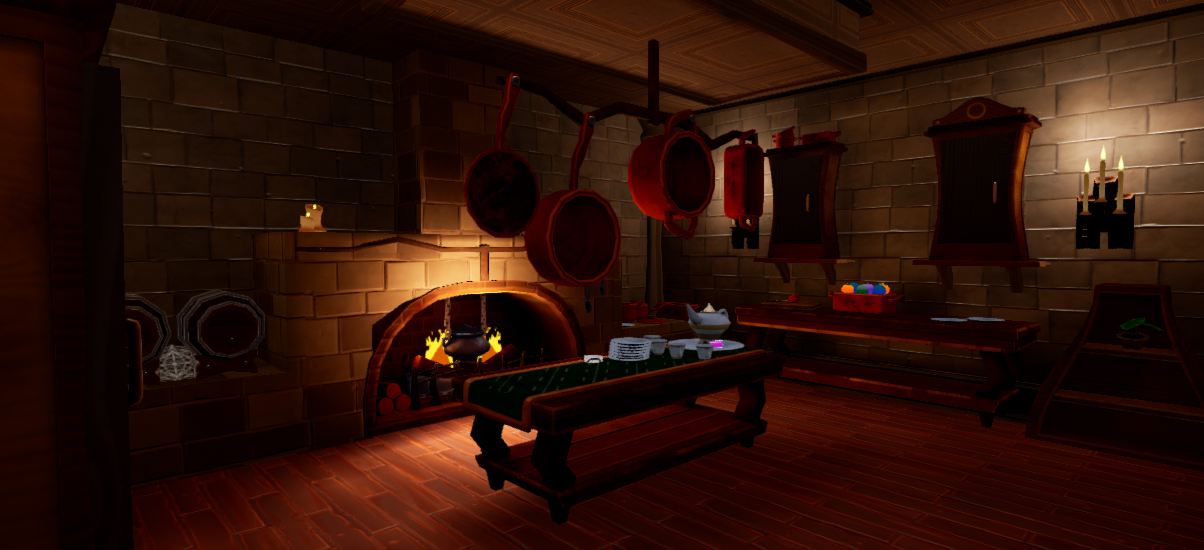
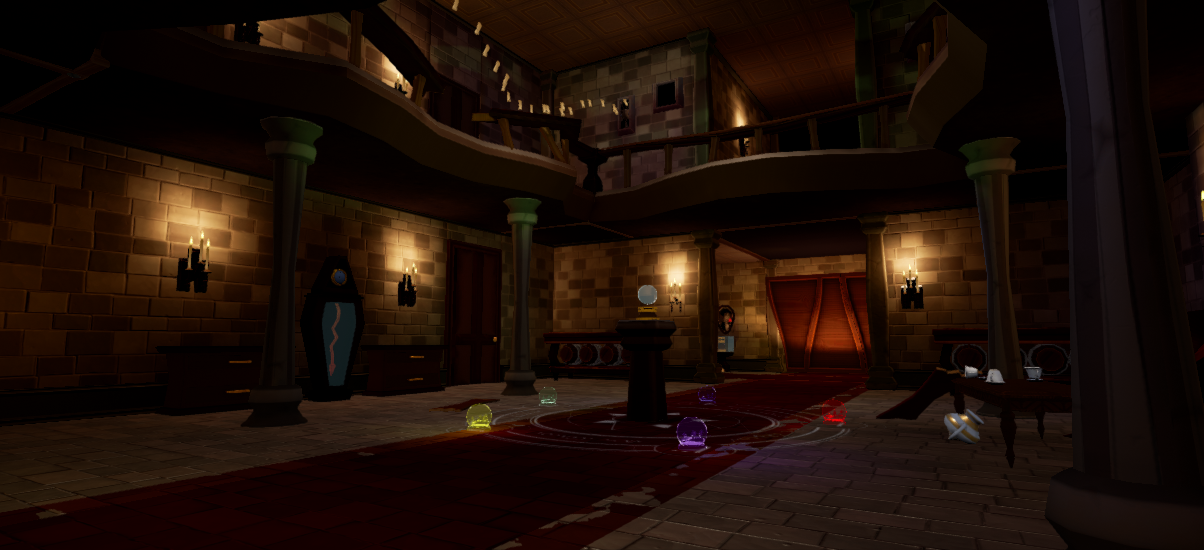

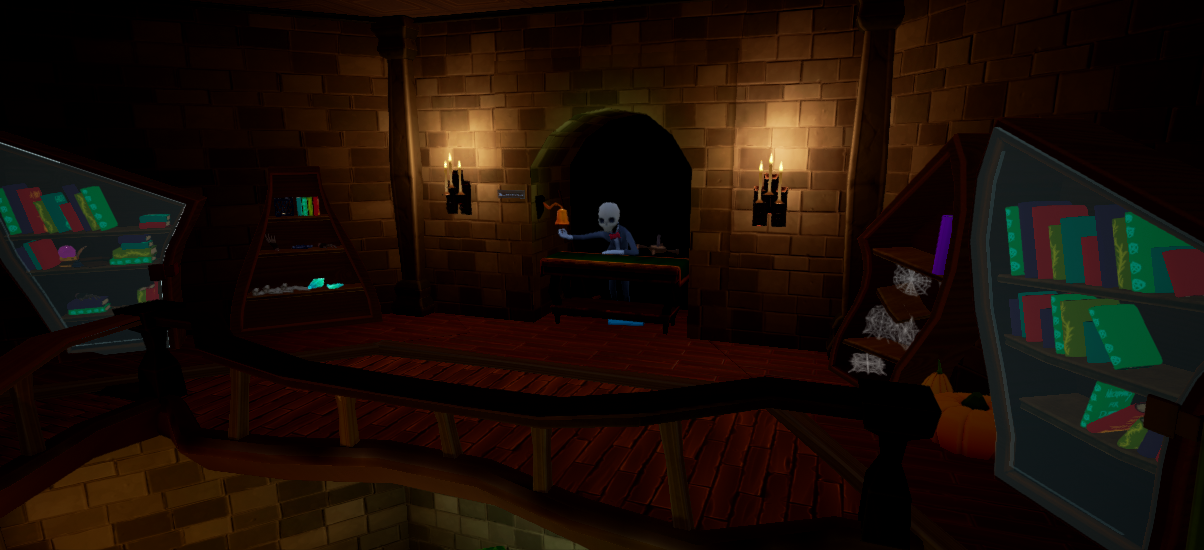
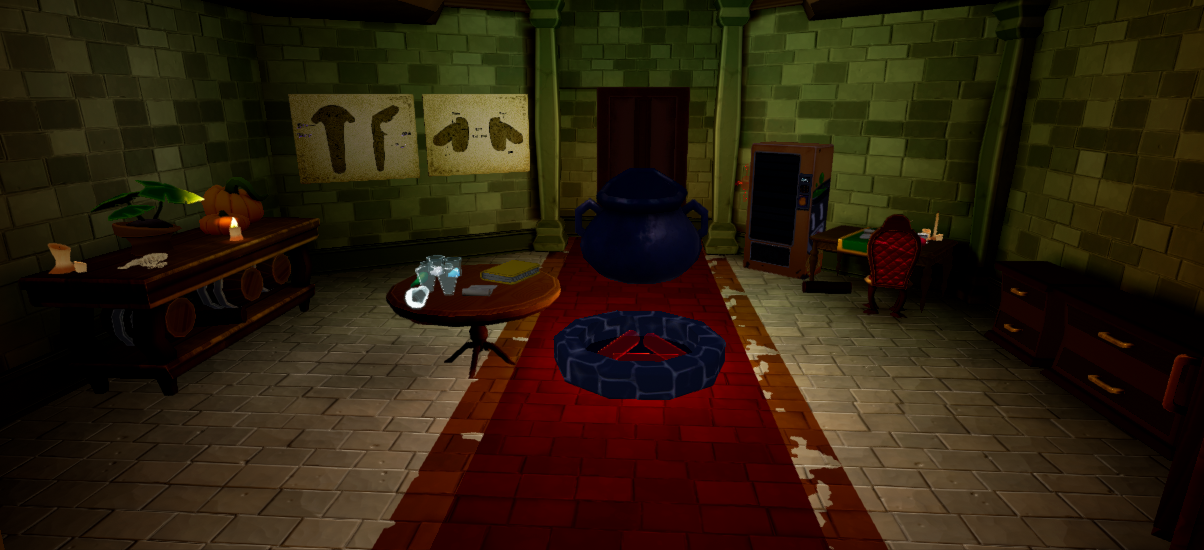
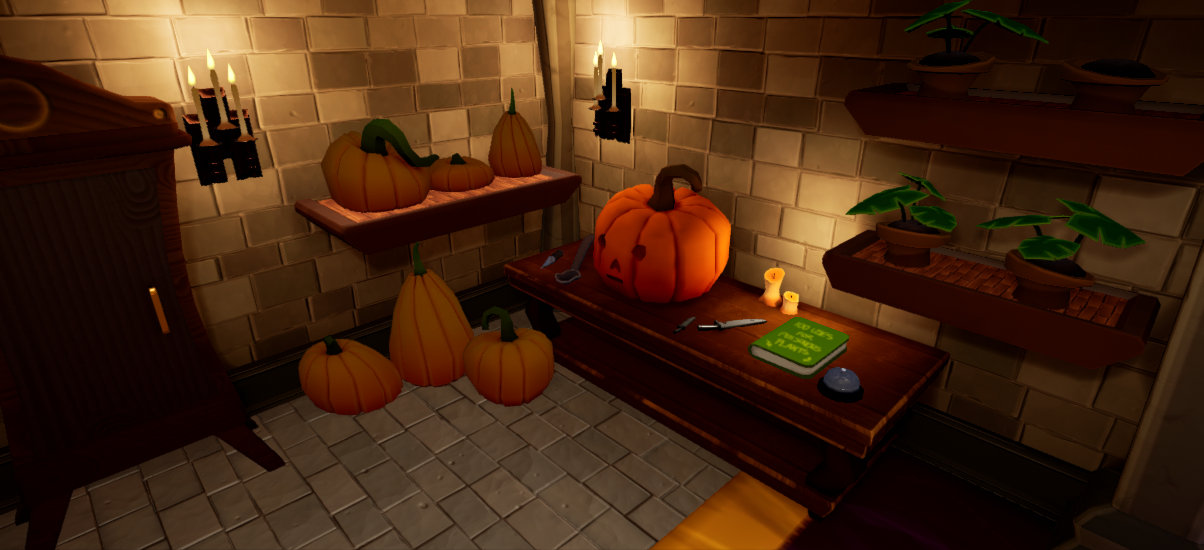

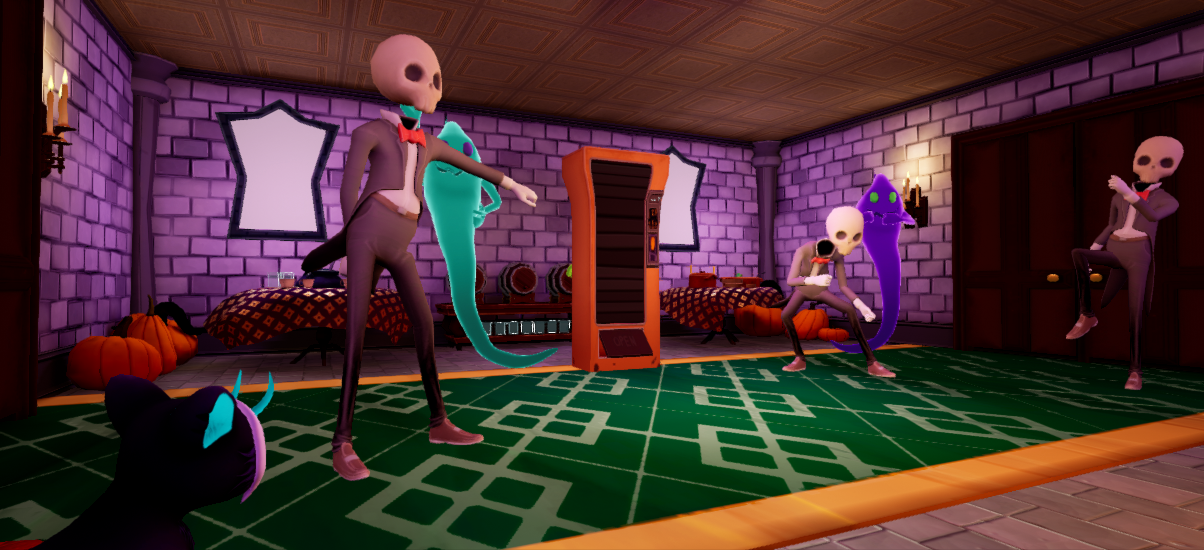
Role: Level Designer Intern
Time frame: 5 months (August 2018 - December 2018)
Team Size: 15
Engine: Unreal Engine 4.20
Genre: Virtual Reality Escape Room
Multiplayer, Co-Op (Up to 4 people with HTC Vive or Occulus Rift)
Participated in an Escape Room, and played VR escape rooms for inspiration and knowledge on how Escape Rooms operate.
Designed puzzles of various difficulties that ranged from critical thinking skills, pattern recognition, and dexterous movement.
Paper/brown box prototyped designed puzzles for play testing and player feedback.
Documented puzzle steps and solution for ease of implementation.
Created asset lists for environment set dressing and puzzle building.
Experimented with various room layouts and puzzle placements in order to test flow and find a golden path.
Collaborated with other level designers to white box and set dress the main escape room, a win/loss room, and the player lobby room.
Combined assets together to build special props that would be used throughout the level.
Documented puzzle flow in an Excel spreadsheet, listing each puzzle’s key and lock as well as open puzzles during each phase of the escape room.
In Haunting Hour, my main tasks involved designing puzzles, prototyping and play testing, and set dressing the play space. Since Haunting Hour is a multiplayer VR escape room, puzzles had to be designed in a way that could be solved using multiple people in order to keep all the players occupied or involved. This involved planning the puzzles, then creating a paper/brown box prototype to have people play test, followed by iteration based on feedback. Once I am satisfied with the results of my play tests, I document the puzzle solution for the technical designers and programmers. Additionally, I create an asset list for our environment artist, if necessary. After gaining a list of approved puzzles, I would then have to design a castle layout and link puzzles together that created a coherent flow.
In terms of the game’s level design, it was my first time designing a space for VR. I had to pay special attention to scale, and had to pop on the headset after reaching a decent stopping point to make sure I was scaling walls and furniture correctly. I also had the taller people on the team explore my space just to make sure nothing was too short for them to reach, as I am more towards a shorter height. This way, I can cover the spectrum and nothing is out of reach for someone who is too tall or too short. While I design and set dress the space, I used the Witch’s magical vending machine as my height reference. It is the approximate height of someone who is 6’ and its keypad provided a good reference for shelf height for players around my height (which is 5’3”).
Layout and Puzzle Building
Here are a few of my level layout sketches for Haunting Hour. I would first sketch the layout then place puzzles (labeled by their numbers) in rooms that I thought were appropriate for them. In my second sketch (on the right), I reorganized the list of implemented puzzles to match their corresponding theme and to make sure I included a set number of puzzles from each theme.
And here is an example of a puzzle prototype I did. While this exact prototype did not make it into the game due to art limitations and scope, it was the starting point of one of the puzzle that did ultimately make it into the game: Feeding the Skeleton.
This particular prototype had players try to fix a fractured/broken skeleton using ingredients to create an adhesive, or by fishing out new bones. The adhesive cauldron recipe was hidden somewhere in the room, which play testers had to look around to find first; ingredients and the cauldron were all visible to the player; and parts of a skeleton were missing inside a mysterious reach-inside-without-looking-and-pull-your-hand-out box. The play testers would then assemble the skeleton (with certain parts of the skeleton already in place) and fill in the fractures with adhesive. Any parts fished out of the mysterious box would replace any broken bones.
